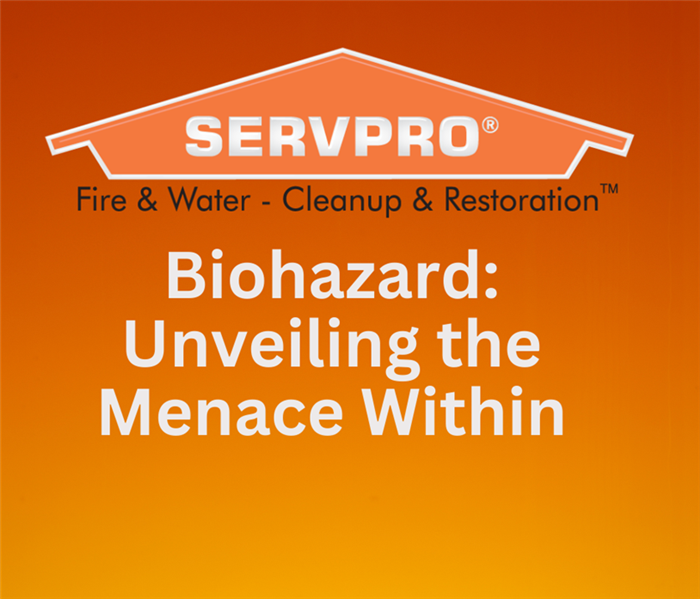Biohazard: Unveiling the Menace Within
7/7/2023 (Permalink)
In our ever-evolving world, potential threats lurk both visibly and invisibly, with some dangers concealed from our naked eyes. Among these hidden perils lies a formidable menace known as biohazards. Biohazards, defined as biological agents or substances that pose risks to living organisms, have emerged as a significant concern in recent times. This article aims to shed light on the nature of biohazards, their diverse forms, and the critical importance of effective management in safeguarding our well-being.
Understanding the Essence of Biohazards: Biohazards encompass a broad range of hazardous entities, including bacteria, viruses, toxins, fungi, and other biological substances. These threats can be found in various environments, such as laboratories, hospitals, industrial settings, and even natural ecosystems. What makes biohazards particularly treacherous is their capacity to induce infections, diseases, and severe health complications in humans and animals alike.
Exploring Biohazard Categories:
Biological Agents: Pathogenic microorganisms like bacteria, viruses, fungi, and parasites fall into this category. Examples of well-known biohazards include Salmonella, E. coli, HIV, influenza, and anthrax. These agents can spread through direct contact, droplets, contaminated food or water, or vectors like mosquitoes. Biomedical Waste: Medical facilities generate substantial quantities of hazardous waste, including used needles, blood-soaked materials, contaminated sharps, and pharmaceutical waste. Improper handling or disposal of these materials can lead to the dissemination of infections and endanger public health. Genetically Modified Organisms (GMOs): While GMOs offer benefits in agriculture and medical research, their uncontrolled release or mishandling can result in unintended consequences. These genetically altered organisms, possessing specific traits, may disrupt ecosystems and pose risks to native species. Chemical Agents: Biohazards can also manifest as toxic chemicals or toxins produced by organisms. Pesticides, heavy metals, and industrial pollutants, when released into the environment, can contaminate air, water, and soil, thus endangering human and animal life.
Effective Biohazard Management: Efficient management of biohazards is paramount to protect public health, preserve the environment, and prevent the spread of diseases. Here are key aspects of biohazard management:
Risk Assessment and Prevention: Identifying potential biohazards, evaluating their risks, and implementing preventive measures are crucial. This involves providing proper training and education to individuals handling biohazardous materials, implementing safety protocols, and enforcing regulations to minimize exposure and transmission. Safe Handling and Disposal: Prudent handling, storage, and disposal of biohazardous materials are of utmost importance. Strict adherence to guidelines, such as employing personal protective equipment (PPE), following decontamination procedures, and utilizing specialized waste disposal methods, helps minimize the risks associated with biohazards. Research and Development: Ongoing scientific research plays a vital role in understanding biohazards, their behavior, and developing effective countermeasures. Investment in research and development of vaccines, antiviral drugs, and diagnostic tools aids in the prevention and management of biohazard outbreaks. Public Awareness and Education: Educating the general public about biohazards, their potential risks, and proper precautions cultivates a culture of safety and responsibility. Awareness campaigns, public health initiatives, and educational programs empower individuals to protect themselves and their communities.
Biohazards pose significant threats to human health, the environment, and overall well-being. By comprehending the various types of biohazards, implementing effective management strategies, and promoting awareness, we take essential steps toward mitigating these risks.
SERVPRO Of Natick Milford, the trusted choice for cleanup and restoration services in residential and commercial buildings, specializes in fire, mold, water, and storm damage. We proudly serve Blackstone, Hopedale, Mendon, Milford, Natick, North Natick, and South Natick, MA.




 24/7 Emergency Service
24/7 Emergency Service
